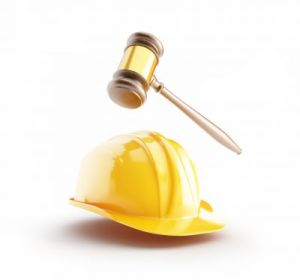 Not all states in Australia are adopting the harmonised model of WHS laws. This is still a work in progress as consistency in work health and safety laws requires a lot of work. Victoria and Western Australia have not yet adopted the model harmonised WHS laws, although best practice in business has a high regard for uniformity of Work Health and Safety laws across Australia. The Northern Territory, Queensland, Victoria and New South Wales have started their model harmonised WHS laws last 1 January 2012. Majority of corporate organisations opted to see consistency on safety laws implemented across Australian states.
Not all states in Australia are adopting the harmonised model of WHS laws. This is still a work in progress as consistency in work health and safety laws requires a lot of work. Victoria and Western Australia have not yet adopted the model harmonised WHS laws, although best practice in business has a high regard for uniformity of Work Health and Safety laws across Australia. The Northern Territory, Queensland, Victoria and New South Wales have started their model harmonised WHS laws last 1 January 2012. Majority of corporate organisations opted to see consistency on safety laws implemented across Australian states.
Tasmania has already started its Work Health and Safety laws earlier in 2012. After the federal election, Victoria and Western Australia will strategise in implementing the model work health and safety laws. The Western Australia WA may yet to consider implementing model harmonised safety laws
The opinion of the WA government remains: the government has consistently advised that there are four areas of the model WHS laws that would not be implemented. These are:
- Penalty levels
- Union right of entry
- Health and safety representatives' capacity to direct the cessation of work
- Reverse onus of proof in discrimination matters
A single major step in the process of harmonisation for Western Australia is establishing consistent mining and non-mining work safety laws to take over the existing Occupational Safety and Health Act of 1984 and the Health Act of 1984 which have identical general duties. However, there are some things to be finalised like the draft model of WHS Mines Regulations and Codes of Practice for Mining that have been established by Safe Work Australia in relation with the National Mine Safety Framework. Western Australia may opt to consider enforcing the model WHS laws that involve the Mines Regulations and Mines Codes of Practice.
One key step in the harmonisation process for WA will be implementing consistent mining and non-mining safety laws to replace the current Occupational Safety and Health Act 1984 and the Mines Safety and Inspection Act 1994, which have very similar general duties.
The draft model WHS Mines Regulations and Codes of Practice for Mining that have been developed by Safe Work Australia in conjunction with the National Mine Safety Framework are still to be finalised. When this step has occurred, WA may consider implementing the model WHS laws, which will include the Mines Regulations and Mines Codes of Practice.
Constant Safety Laws in Victoria
Safework Australia said that the model WHS laws were patterned on the Victorian Occupational Health and Safety Laws. Because the government of Victoria informed that there will be no change from existing safety laws. One unique item is the "right to silence" wherein individuals in a Worksafe investigation have a right to silence if replying to a question may incriminate them. South Australia changed its model WHS laws to join in the right to silence in its adoption of the large portion of the model WHS laws earlier.
How far does organisations safety duty can extend, as a person conducting a business undertaking (PCBU)? The current WHS laws have expanded to as far as the business extends if the business is engaged in designing, manufacturing, building, project management or operating a number of mining sites. The obligations on safety span to taking practical steps to manage the undertaking like the High Court decision of Baiada Poultry Pty Ltd versus The Queen HCA 14. Here, Baiada was not convicted for breach of the Victorian OHS laws for a workplace incident on the contractor's worksite. The OHS laws being applied was within the confines of the OHS Act.
The officers of a PCBU must be practical and proactive in taking steps in the implementation of a due diligence system that is appropriate for the business and related for their role within the PCBU. An officer who comprehends the hazards and risks associated with the operations of the business and has an efficient safety management system that manages the true extent of the business will be able to come up with a safe and cost effective operation.


